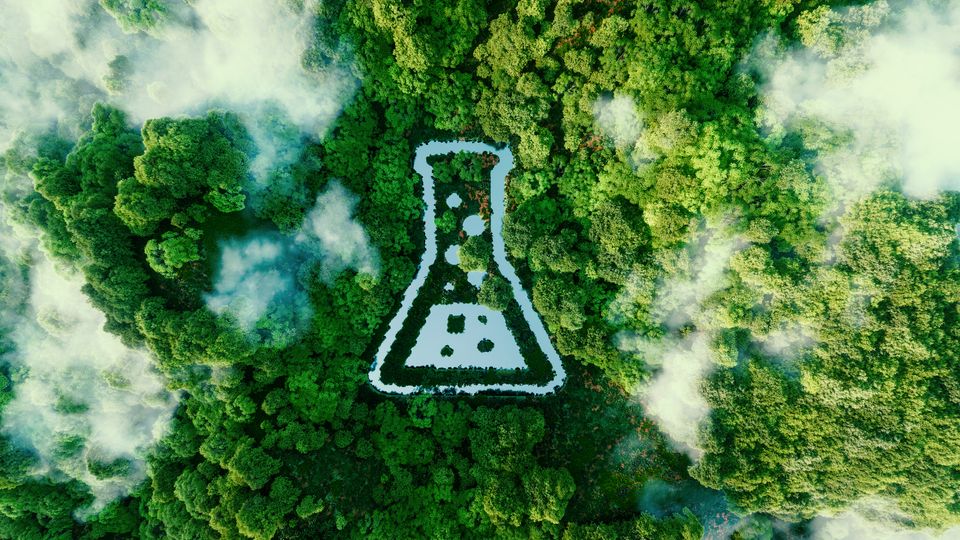The Role of Metrology in Supporting Sustainable and Circular Materials
Technology Networks asked a metrology expert how better measurement and analysis can enable more sustainable materials.

Complete the form below to unlock access to ALL audio articles.
One of the most dynamic frontiers in the field of materials science is the development of new and improved sustainable materials that can support the advancement of a more circular economy.
At the Advanced Materials Show 2025, experts discussed some of the challenges that relate to enabling more sustainable materials and their circularity, paying particular attention to the role that measurement and metrology – the scientific study of measurement – can play in supporting the adoption and scaling of these materials.
To learn more about the field of sustainable materials research and the importance of measurement to its future, Technology Networks spoke with panel chair Dr. Yiwen Pei, a senior scientist at the National Physical Laboratory (NPL) and an expert in the field of polymer sciences and chemical metrology.
What does it mean for a material to be sustainable or circular?
Among the general public, and sometimes even in research, these terms are often used interchangeably. But there is quite a distinct difference between the two terms.
Overall, sustainability is a broader term that can be applied to any approach or innovation that meets the demands of the market while also minimizing its impact on the environment compared to existing technologies. For example, recycling or moving away from the use of fossil fuels would be a sustainable change.
With the term “circularity”, we are being much more
specific. This refers to an approach where you are trying to achieve a
closed-loop or a circular chain in a specific industry. For example, in
plastics, giving materials a second life through reuse and recycling is a core
principle of circularity. This kind of approach helps to minimize waste and
promote resource efficiency.
How do sustainability and circularity relate to your research?
I am a trained PhD chemist specialized in polymer sciences. At NPL, I lead the chemical metrology of polymeric technology platforms for a wide range of advanced materials, ranging from pharmaceuticals, microplastics and biopolymer packaging, with a growing focus on sustainability.
My research focuses on two core aspects:
Sustainable manufacturing of advanced therapeutics – chemical metrology that underpins polymeric (nano)materials that enter your body to treat diseases and cure cancer.
Circularity in polymers and packaging – chemical analysis that ensures plastics’ entire circular supply chains have minimal ‘leakage’ (i.e., waste leaving the supply chain).
On the sustainable manufacturing side, one of the projects I am leading is developing ‘end-to-end’ platforms using digital data tools combined with bespoke 3D chemical analysis methods to provide key material attributes of advanced therapeutics, such as precision medicines, long-acting injectables (LAI) products or vaccines, linking them to the pharmacokinetic models. This digital platform supports sustainable medicines manufacturing by derisking decision making, cost-saving, reducing waste and improving resource efficiency.
On the circularity and packaging side, I am very passionate about primary and secondary packaging, in areas like pharmaceuticals and the food and drink industry. Reuse and recycling, together with bio-based alternatives, offer a diverse set of packaging solutions to industries tackling sustainability and circularity challenges and facing growing regulatory pressure. Currently, the uptake of sustainable packaging is somewhat limited due to the health and safety, and quality concerns of the recyclates. Therefore, chemical metrology is urgently needed to provide fit-for-purpose analytical tools and change consumer perception by bringing confidence to measurements and data. With the growing demand for sustainable alternatives, in the past few years I have collaborated with a range of UK companies in the sustainable packaging space.
What role do measurement and metrology play in supporting the growth of the sustainable and circular materials sector?
1. Fit-for-purpose measurements and standards
Several materials are experiencing a surge in popularity due to sustainability and innovation – measurement capabilities must be able to follow that. The regulatory side can swoop in fast and strong, but there may be only limited solutions that are capable of measuring material characteristics to meet the regulatory requirements.
For example, if products do not meet their packaging recycling obligations, businesses could face potential fines under the Extended Producer Responsibility (EPR) policy. However, the development of analytical methods in this area is still at an early stage. There are a lot of research metrologists who are working in these areas to find bespoke, fit-for-measure methods that can support the regulatory side of sustainable materials.
There are also concerns about the quality of recycled materials. Quality needs to be ensured in a specific approach, as recycling is a batch-to-batch process. Quite often, what you find is that when you use recycled plastics, after several cycles of reuse and recycling, you start to see some defects (e.g., cracks and surface roughening) in the product. Nowadays, a significant topic is the implementation of fit-for-purpose quality assurance tools. However, metrologists are also keen to engage with manufacturers to better understand the onset of these defects and uncover the mechanisms behind why they are happening, and ultimately, what we can do to prevent them.
2. Accurate sampling, data handling and processing
On the sampling side, imagine you are doing recycling and there is a large quantity of plastics coming in with every batch. How are you going to mix it? How are you going to sample it? How much material should I test? How many tests are required to yield statistically representative data? These are all the crucial metrological questions we would like to find answers to, yet there are still numerous knowledge gaps, despite some industry practices being currently available in this area. Our role is to help people establish this knowledge.
For data processing. Once you have acquired a huge amount of data sets, do you have a standardized data software to process them? Is that software validated and do you trust it? Machine learning is sometimes used for this process, but do you trust your machine learning model? Has that been validated? Machine learning tools do not necessarily provide solutions if the measurement results and data that are benchmarking it are not trustworthy. These are all the questions that NPL has been addressing in collaboration with our partners to support industry advancement in this area.
What types of challenges does the field of sustainable materials face?
There are many challenges. One of the biggest is confidence and public perception. Regardless of how innovative a technology might be or how well a material can be decontaminated and recycled, eventually, it is all dependent on whether the public trusts it and whether a customer is going to invest in it.
Consumer behavior drives demands, and at NPL, as the UK’s national metrology institute, it is our responsibility to consolidate and be impartial, supporting the industry to achieve the best outcomes. Hence, we have been developing bespoke analytical tools, measurement methods and protocols to support industry by bringing confidence to consumers through evidence-based science and the voice of the customer.
Another major challenge lies in the complexity of standards frameworks and communities. Namely, which standard should you comply with regarding a new product or process? Are you concerned with industry standards, international or pharmacopeia standards? Sometimes people do question whether all these standards are fit-for-purpose. The harmonisation of these standards across a range of standardisation bodies is required. Differences in testing methods and/or operation conditions in various standards lead to challenges in measuring “true” materials’ circularity in their local environment. For example, even if the standards are met, a certified compostable polymer may not perform the same way in all facilities and geographies.
There is also a need to adopt new or more advanced analytical tools in documentary standards for key materials attributes such as recycled content, disintegration rate and ecotoxicity. For this purpose, terminology documents, reference materials, standardized and fit-for-purpose measurement methods and protocols are important in this field. NPL is a prominent leader in standardization, and many of NPL’s scientists regularly contribute to the development of standard documentation to promote the growth and maturity of new research areas such as sustainability assessment and end-of-life analysis.
Looking to the future, how do you see sustainable and circular materials evolving over the next 5–10 years?
I do think we are on the right track. It is very fascinating to see the public and the government recognizing the importance of protecting our environment. There are policies that drive this area and there are also government funds directly supporting sustainability. The general public can now make more informed decisions; when I go to the supermarket, I now have the choice of deciding between a biodegradable diaper for my child versus diapers that are made using fossil fuels. I would choose that biodegradable diaper, content in the fact that I am doing one little thing better for the environment.
I think it is also critical for the next generation to be educated on this, because in the next 10 years, they will be the buyers of future cars, smartphones and related innovative technologies. If they consider sustainability, circularity and energy-saving as trendy, then that would be a great push for the market at this moment.
In the next 5–10 years, I believe we will see a lot more adoption and acceleration in sustainable innovations – not only on the materials side, but also on the manufacturing side. In the UK, for example, we have numerous emerging and highly promising technologies and a pool of innovative small and medium enterprises. Hence, it will be a case of thinking about how we can step up and be in a world-leading position for promoting sustainability. That means working with international partners to promote our technology and to really think about manufacturing at scale.
But in short, I am really looking forward to seeing a better future and a more sustainable world.
This article was updated on August 6, 2025, to include additional comments from the interviewee.



